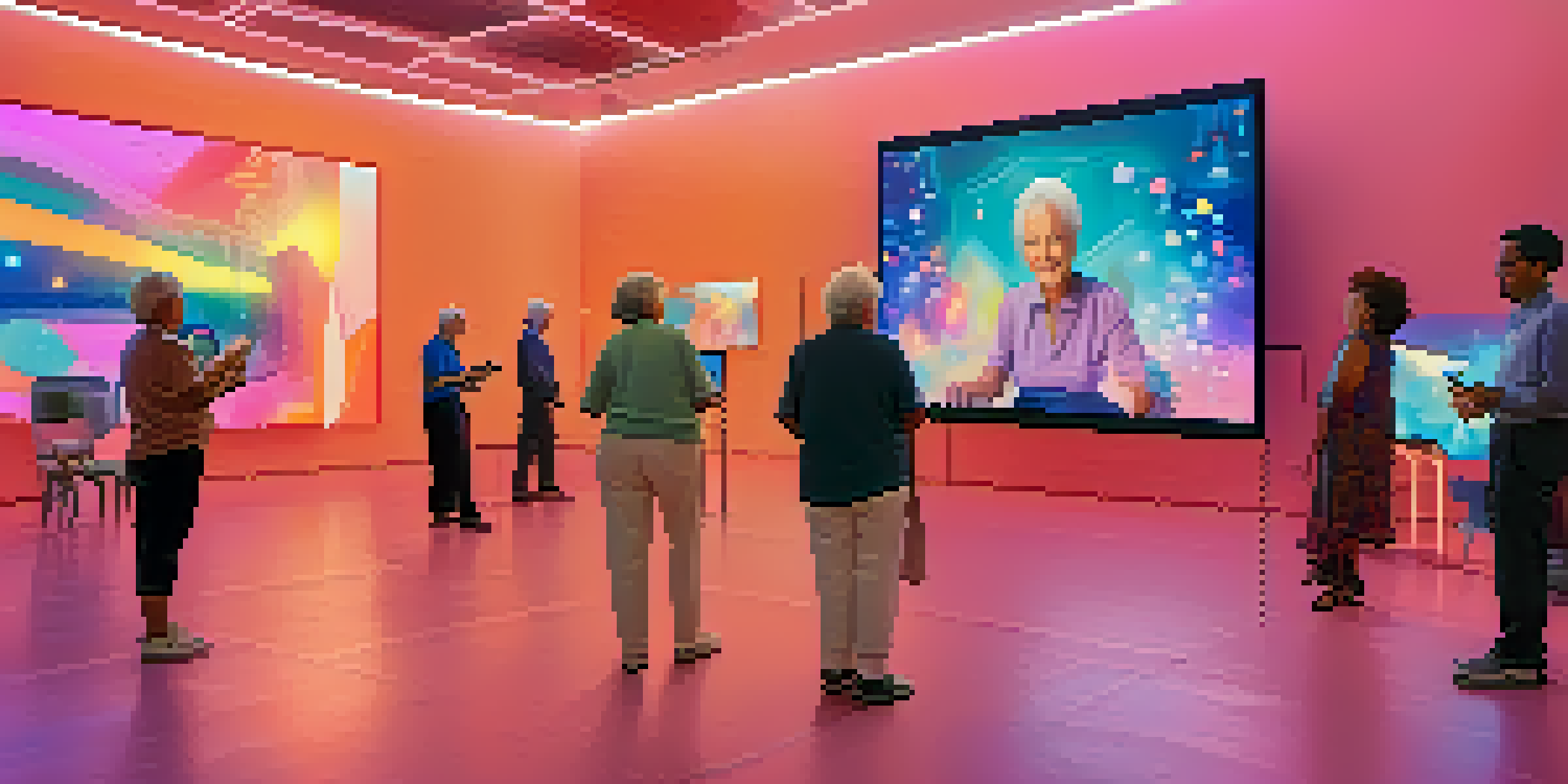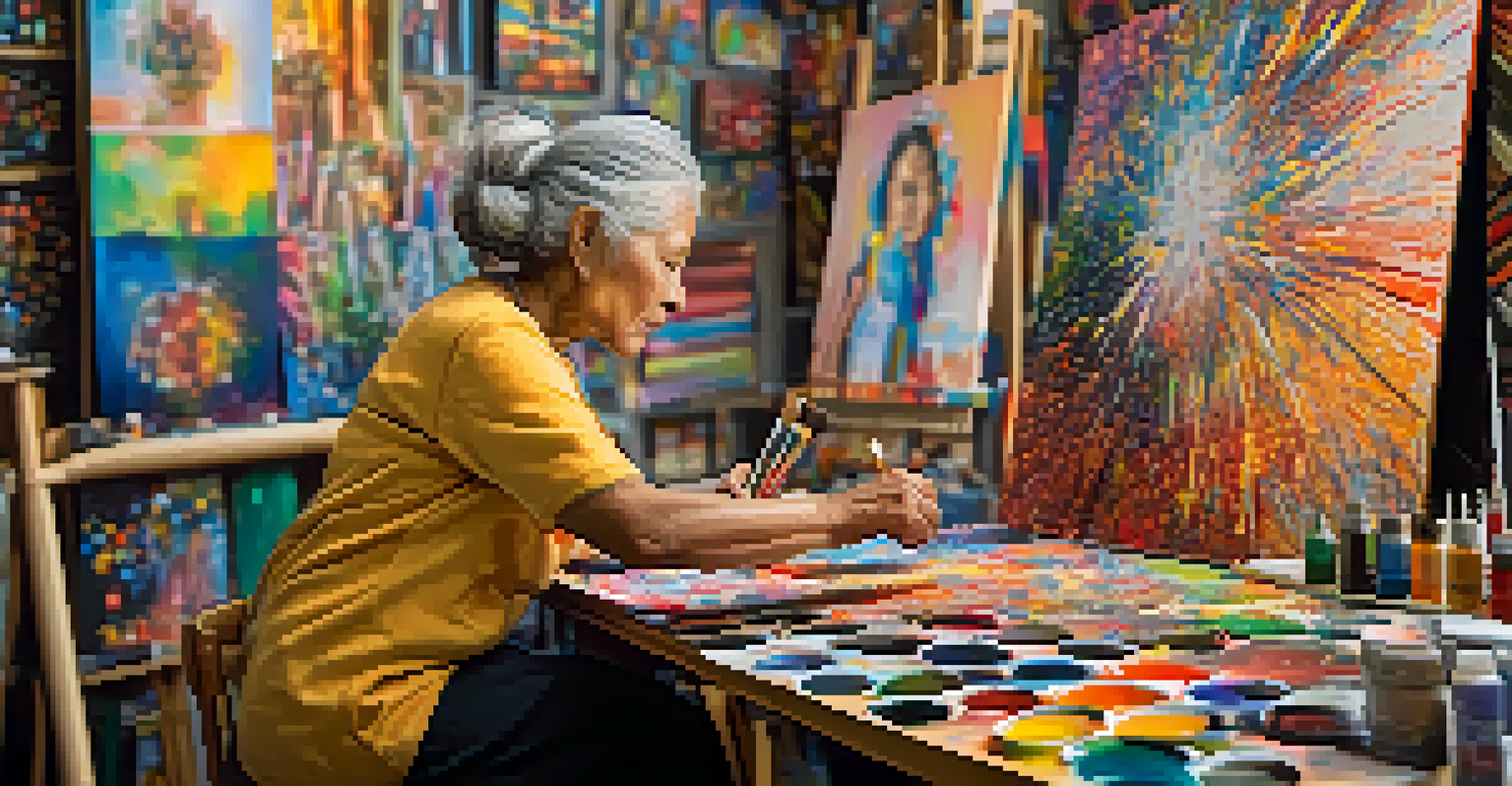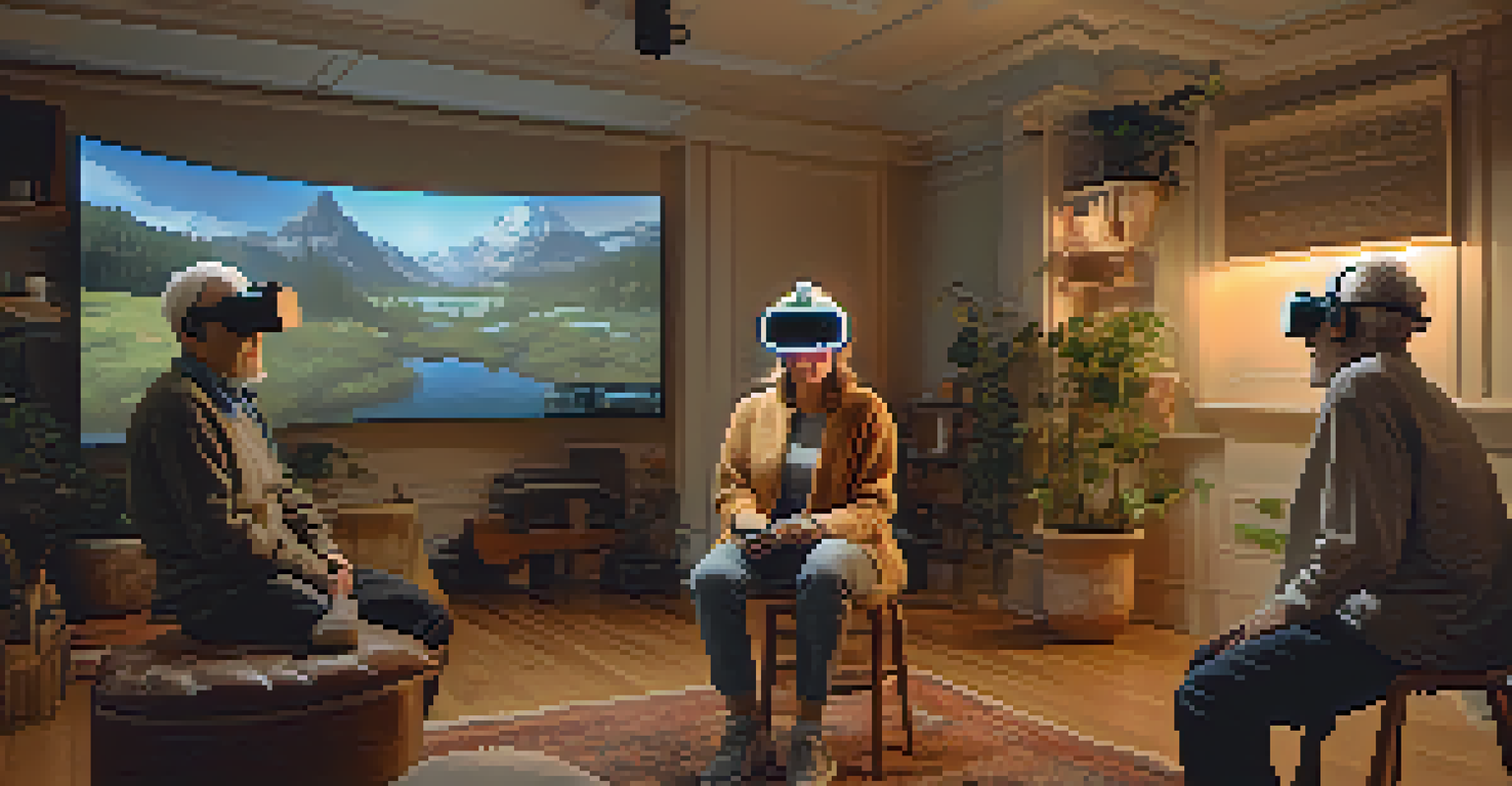Aging in the Digital Age: New Media Art Perspectives

Understanding Aging in the Digital Landscape
Aging in the digital age presents unique challenges and opportunities. With technology rapidly evolving, older adults are often navigating a world that feels foreign to them. This juxtaposition between age and digital innovation invites a deeper exploration of how aging is represented in contemporary art.
Aging is not lost youth but a new stage of opportunity and strength.
Artists are reflecting the complexities of aging, using digital mediums to bridge generational gaps. They are creating work that resonates with both older and younger audiences, fostering a dialogue about the experiences of aging. This shift helps to dispel stereotypes and encourages a more nuanced understanding of what it means to grow older today.
By embracing technology, artists are challenging traditional notions of aging. They use new media to highlight the vibrancy of older age, showcasing stories and perspectives that might otherwise be overlooked. This evolution in representation is crucial in a society that often prioritizes youth.
The Role of Technology in Artistic Expression
Technology has become an essential tool for artists exploring themes of aging. Digital platforms allow for innovative storytelling, merging visual art, video, and interactive experiences. Through these mediums, artists can reach wider audiences and engage them in meaningful conversations about aging.

For instance, interactive installations invite viewers to participate in the artistic process, blurring the lines between creator and audience. This involvement can lead to a deeper emotional connection, making the themes of aging more relatable and impactful. Such experiences encourage empathy, fostering a better understanding of the aging process.
Art Challenges Aging Stereotypes
Artists use digital mediums to reshape perceptions of aging, fostering dialogue and understanding across generations.
Moreover, technology enables artists to document and share the lived experiences of older adults. By using social media and other online platforms, these stories can gain visibility, promoting awareness and appreciation for the rich narratives that accompany aging. This not only honors individual experiences but also builds a community around shared stories.
Art as a Tool for Social Change
Art has long been a catalyst for social change, and new media art is no exception. By addressing the realities of aging, artists can challenge societal norms and advocate for the rights and recognition of older adults. This is especially crucial in a culture that often sidelines their voices.
The future belongs to those who believe in the beauty of their dreams.
Through provocative imagery and compelling narratives, artists can spark conversations around aging that might not otherwise occur. For example, exhibitions that feature the works of older artists can highlight their contributions, shifting perceptions and encouraging respect for their experiences. This approach not only empowers the artists but also enriches the art community as a whole.
Furthermore, art can foster intergenerational dialogue, bridging the gap between young and older audiences. By engaging both groups in discussions about aging, artists can cultivate understanding and compassion, ultimately leading to a more inclusive society. This transformative power of art underscores its vital role in addressing contemporary issues.
Highlighting Diverse Experiences of Aging
One of the strengths of new media art is its ability to showcase diverse narratives surrounding aging. Artists from different backgrounds bring unique perspectives that reflect the varied experiences of growing older. This diversity enriches the conversation and challenges monolithic representations of aging.
For example, multicultural artists may explore how aging intersects with cultural identity, highlighting the unique challenges faced by older adults in different communities. This approach not only broadens the scope of the conversation but also invites empathy and understanding from a wider audience. It reminds us that aging is not a one-size-fits-all experience.
Technology Enhances Artistic Expression
Innovative digital platforms allow artists to engage wider audiences and create immersive experiences that highlight the realities of aging.
By prioritizing inclusivity, new media art can help to amplify lesser-known stories and experiences. This representation is essential in combating ageism and fostering a society that values all individuals, regardless of their age. Ultimately, it reinforces the idea that every story matters, especially those that have been historically marginalized.
Interactive Digital Narratives on Aging
Interactive digital narratives are revolutionizing how we engage with stories about aging. These platforms allow users to influence the direction of the narrative, creating a personal connection to the themes presented. This engagement can lead to a greater understanding of aging's complexities.
For instance, virtual reality experiences can immerse individuals in the daily lives of older adults, providing insights into their challenges and joys. These firsthand experiences can be powerful, evoking empathy and encouraging reflection on one's own perceptions of aging. Such immersive storytelling can change how society views older generations.
Additionally, these interactive narratives can foster dialogue among users, creating a space for shared experiences and discussions. By bringing people together to explore aging through a digital lens, artists can facilitate a community that values and respects the stories of older adults. This collaborative effort is vital in reshaping the narrative around aging.
The Future of Aging in New Media Art
As technology continues to advance, the possibilities for new media art focusing on aging are limitless. Artists are likely to explore even more innovative ways to engage audiences and tell their stories. This evolution will play a crucial role in shaping societal perceptions of aging.
Future projects may incorporate emerging technologies like artificial intelligence and augmented reality, providing new dimensions to the artistic exploration of aging. These tools can deepen the audience's engagement and foster a more comprehensive understanding of the aging process. As artists experiment with these technologies, they will push the boundaries of traditional art forms.
Diverse Narratives Enrich Aging Discourse
New media art showcases varied experiences of aging, promoting inclusivity and combating ageism through representation.
Ultimately, the future of aging in new media art holds the potential for transformative change. By continuing to highlight diverse experiences and fostering intergenerational dialogue, artists can create a more inclusive narrative that honors the complexities of growing older. This ongoing conversation is essential for building a society that respects and values individuals of all ages.
Conclusion: Embracing Aging Through Art
In conclusion, new media art offers a powerful lens through which to view aging in the digital age. By harnessing technology and innovative storytelling, artists can illuminate the rich experiences of older adults. This representation not only challenges stereotypes but also fosters understanding and empathy across generations.
As we navigate the complexities of aging, the importance of diverse narratives cannot be overstated. By prioritizing inclusion in artistic expression, we can create a more compassionate society that values the contributions of all individuals. Art serves as a bridge, connecting us and reminding us that aging is a shared journey.

Ultimately, as we continue to explore the intersection of aging and new media art, we open up possibilities for dialogue, reflection, and change. Embracing these perspectives can lead to a greater appreciation for the wisdom and experiences that come with age, enriching our lives and communities as a whole.